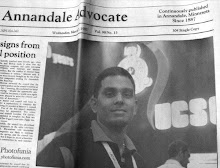| Official name: | Democratic Socialist Republic of Sri Lanka |
| Government type: | republic |
| Location: | Latitude 5° 55. to 9° 50. north, longitude 79° 42. to 81° 52., 650km north of the equator |
| Dimensions: | 430km north to south, 225km east to west |
| Coastline: | 1,340km |
| Area: | 65,525km
|
| Currency (code): | Sri Lankan rupee (LKR) |
| Independence: | 4 February 1948 |
| Administrative capital: | Sri Jayewardenepura |
| Commercial capital: | Colombo
|
| Administrative divisions: | 9 provinces; Central, North Central, North Eastern, North Western, Sabaragamuwa, Southern, Uva, Western, Eastern Province. |
| Climate: | Typically tropical, with a northeast monsoon (December to March) bringing unsettled weather to the north and east, and a southwest monsoon (June to October) bringing bad weather to the south and west |
| Terrain: | Mostly low, flat to rolling plain; mountains in south-central interior |
| Highest mountain: | Pidurutalagala, 2,524m |
| Highest waterfall: | Bambarakanda, 263m |
| National Flower | The Blue Water Lily (Nymphaea stellata). |
| National parks and nature reserves area: | 8,000sq.km |
| Population: | 21,128,773 (? Census) |
| Population growth rate: | 1.3% |
| Population Density: | 309 people per sq km |
| Life Expectancy at Birth | 74 female, 64 male |
| Literacy rate : | Female 87.9 Male 92.5 |
| Ethnic groups: | Sinhalese 73.8%, Sri Lankan Moors 7.2%, Indian Tamil 4.6%, Sri Lankan Tamil 3.9%, other 0.5%, unspecified 10% (2001 census) |
| Languages: | Sinhala (official and national language) 74%, Tamil (national language) 18%, other 8%
Note: English (a link language commonly) is used in government and spoken competently by about 10% of the population |
| Religion: | Buddhist 69.1%, Muslim 7.6%, Hindu 7.1%, Christian 6.2%, unspecified 10% (2001 census) |
| Time zone: | Sri Lanka Standard Time is five and a half hours ahead of GMT. (Allowance should be made for summer-time changes in Europe.) |
| International dialing: | +94
|
| Electricity: | 230 . 240 volts, 50 cycles AC. If you travel with a laptop computer bring a stabilizer
|
| Economy: | Sri Lanka.s most dynamic sectors are food processing, textiles and apparel, food and beverages, port construction, telecommunications, and insurance and banking. In 2006, plantation crops made up only 15% of exports (90% in 1970), while textiles and garments accounted for more than 60%. About 800,000 Sri Lankans work abroad, 90% of them in the Middle East. They send home more than US$1 billion a year. |
| Labour force | 34.3% of the labour population is employed in agriculture, 25.3% in industry and 40.4% in services: 40.4% (30 June 2006 est.) The unemployment rate is 5.7% (2007 est.) |
| Agriculture & products | Rice, sugarcane, grains, pulses, oilseed, spices, tea, rubber, coconutsm milk, eggs, hides, beef, fish |
| Industries: | Processing of rubber, tea, coconuts, tobacco and other agricultural commodities; telecommunications, insurance, banking; clothing, textiles; cement, petroleum refining. |
| Exports: | Textiles and apparel; tea and spices; diamonds, emeralds, rubies; coconut products, rubber manufactures, fish
|
| Imports: | Main import commodities are textile fabrics, mineral products, petroleum, foodstuffs, machinery and transportation equipment: $10.61 billion f.o.b. (2007 est.). Percentage of main commodities from main import partners: India 19.6%, China 10.5%, Singapore 8.8%, Iran 5.7%, Malaysia 5.1%, Hong Kong 4.2%, Japan 4.1% (2006) |
| Gross Domestic Product (GDP): | Purchasing power parity: $81.29 billion (2007 est.). Official exchange rate: $30.01 billion (2007 est.) Real growth rate: 6.3% (2007 est.) Per capita: $4,100 (2007 est.) composition by sector: Agriculture: 16.5% Industry: 26.9%
|
| Gross National Product (GNP): | Sri Lanka is placed in 76th place in GNP figures of the world.s nations with $22.8 billion (2005)
|
| Flag description: | yellow with two panels; the smaller hoist-side panel has two equal vertical bands of green (hoist side) and orange; the other panel is a large dark red rectangle with a yellow lion holding a sword, and there is a yellow bo leaf in each corner; the yellow field appears as a border around the entire flag and extends between the two panels |






